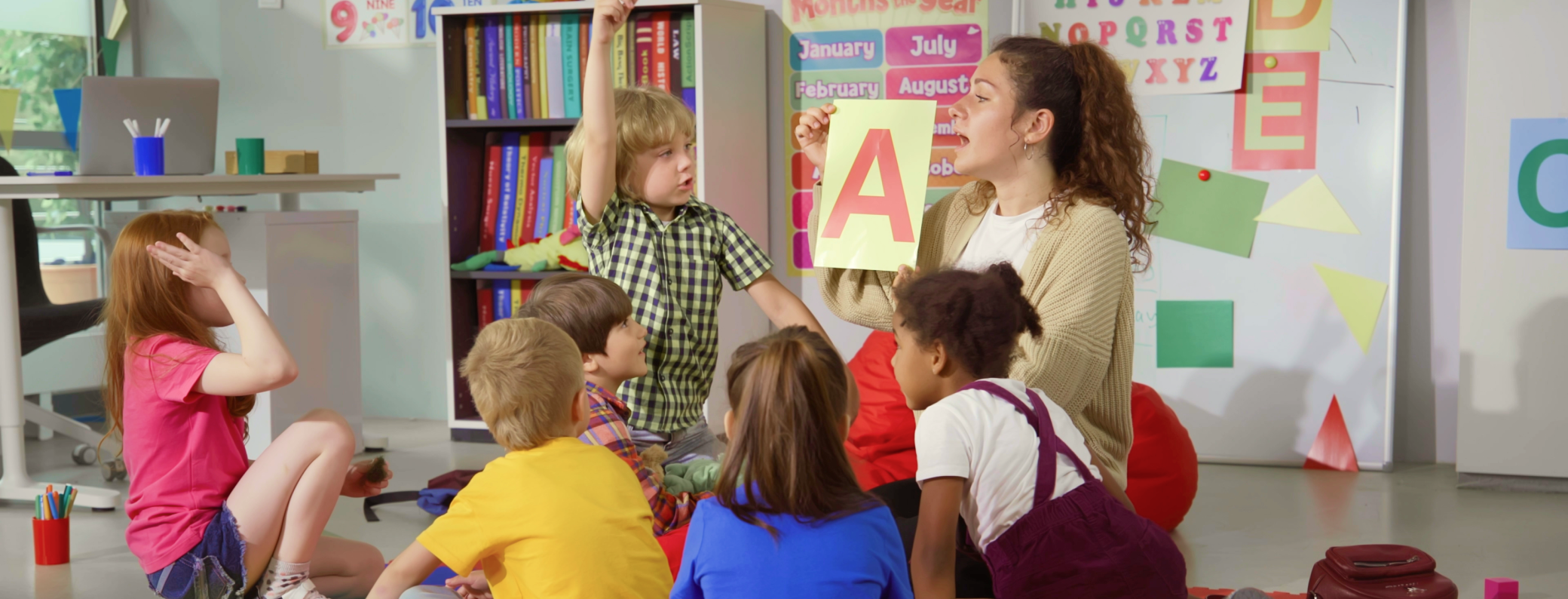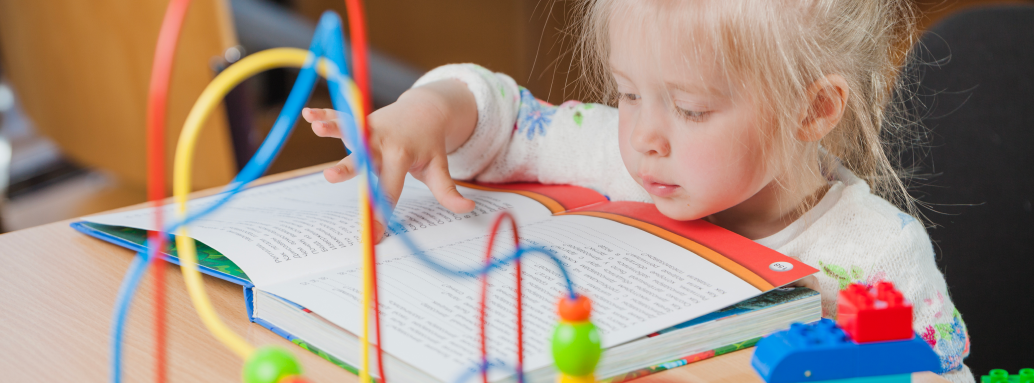How do we support children just enough, without taking over?
That’s the heart of scaffolding in early childhood education. It’s about standing beside a child as they stretch, reach, wobble, and figure things out. When done well, scaffolding doesn’t just teach children what to learn, but how to learn, building confidence, independence, and critical thinking along the way.
In this blog, we’ll explore the what, why, and how of scaffolding in early learning environments. Whether you're a seasoned educator, a new teacher, or a parent curious about development, this guide will help you use scaffolding to elevate the everyday into the extraordinary.
What Is Scaffolding in Early Childhood Education?
The term scaffolding was first coined in the 1970s by Wood, Bruner, and Ross. Inspired by Vygotsky’s theory of the Zone of Proximal Development (ZPD), scaffolding refers to the support an adult or more experienced peer gives to help a child do something they can’t yet do alone, but can achieve with guidance.
Think of a toddler trying to put on their coat. You might hold the sleeve open, offer a hint (“Check where the tag is!”), or model the movement. That’s scaffolding.
Over time, as the child gains skill and confidence, that support is gradually removed until the child can do it independently. The goal is never to do it for them. It’s to help them do it themselves.
The Science Behind Scaffolding
Scaffolding isn’t just a teaching technique. It’s backed by decades of research in child development and neuroscience. When we support children in their "stretch zone," just beyond what they can do independently, we help strengthen brain connections that underpin executive functioning, memory, and reasoning.
Vygotsky emphasized that learning is a social, co-constructed process. Scaffolding provides just enough support to stimulate growth, and in doing so, activates parts of the brain responsible for attention, emotional regulation, and higher-level thinking. When educators engage in this kind of responsive, in-the-moment support, they are not just teaching skills, they are building brains.
Why Is Scaffolding So Important?
Scaffolding is more than a teaching strategy. It’s a relationship-building, confidence-boosting, brain-developing superpower. Here's why it matters:
-
1. Promotes Independence
Children gain a sense of "I did it!" not because someone did it for them, but because someone believed they could and helped them get there.
2. Builds Stronger Neural Connections
Learning within the ZPD helps the brain grow in powerful ways. Scaffolding challenges children just enough to stimulate growth without overwhelming them.
3. Fosters Resilience and Problem-Solving
Rather than giving up at the first sign of difficulty, scaffolded learners begin to see challenges as opportunities to explore.
4. Strengthens Relationships
Scaffolding builds trust. It’s a moment of connection: “I see you. I believe in you. I’m here to help you grow.”
What Scaffolding Is Not
Understanding what scaffolding isn’t is just as important as knowing what it is.
-
It’s not rescuing. Doing the task for the child might get it done quicker, but it removes the opportunity for growth.
-
It’s not controlling. Dictating every step can turn learning into compliance, not curiosity.
-
It’s not one-size-fits-all. Children vary in how much and what kind of support they need. Scaffolding must be responsive and flexible.
True scaffolding is a balanced practice. It sits between over-helping and under-supporting, and it adapts in real time to the child’s evolving needs.
Core Principles of Scaffolding
To scaffold effectively, we must tune into each child's needs. These principles help guide thoughtful support:
-
1. Observation Before Intervention
Start by watching. What can the child already do? What’s just out of reach? Effective scaffolding begins with careful, respectful observation.
2. Set a Clear, Achievable Goal
Scaffolding works best when there’s a specific, meaningful learning objective, like writing their name, sharing a toy, or solving a puzzle.
-
3. Tailor Support to the Individual
No two children are alike. Scaffolding is not one-size-fits-all. It’s responsive, dynamic, and deeply personalized.
-
4. Gradually Release Responsibility
Support should fade as competence increases. This builds ownership and self-efficacy.
Scaffolding Through the Environment
The environment plays a critical role in scaffolding. A well-designed classroom can guide children toward independence without constant adult intervention.
- Arrange materials so children can access them without asking for help.
- Use visual cues, like step-by-step charts or picture labels, to encourage self-direction.
- Offer open-ended, versatile materials that meet children at many different levels of ability and creativity.
The emotional climate also matters. A calm, predictable, and welcoming space gives children the confidence to take risks and try new things.
6 Powerful Scaffolding Strategies (With Real-Life Examples)
-
1. Model the Skill
Show the child how to do the task first, slowly and clearly.
Example: “Watch me draw the number 2. See how I curve down, then make a line?”
2. Use Open-Ended Questions
Prompt thinking without giving the answer.
Try: “What do you think will happen if we turn the block this way?”
-
3. Offer Hints and Cues
Point out clues in the environment or break the task into steps.
Try: “Look at the color of the lid. Does it match the container?”
4. Narrate and Reflect
Verbalize the process, helping children internalize thinking skills.
Example: “You turned the puzzle piece around and tried again. That was clever.”
5. Provide Visual or Physical Aids
Use props, pictures, or partial assistance.
Example: A dotted outline helps a child practice writing letters independently.
6. Celebrate Progress, Not Perfection
Acknowledge effort and strategy, not just success.
Try: “You really stuck with that. Even when it was tricky, you kept going.”
-
The Role of Emotion in Scaffolding
Scaffolding isn’t only cognitive, it’s emotional. Children learn best when they feel safe, seen, and supported. An anxious or discouraged child cannot access their ZPD fully.
Scaffolding requires:
Patience
Progress isn’t always linear.
Attunement
Be present. Be warm.
Trust
Let the child take the lead when they’re ready.
Your calm presence tells a child: It’s okay to try. I’ve got you.
Scaffolding at Different Ages
Infants and Toddlers
-
Provide sensory experiences and model actions
-
Use simple language and repetition
-
Support motor milestones with gentle encouragement
Preschoolers
-
Scaffold language and problem-solving through play
-
Invite them into real-world tasks (sorting laundry, watering plants)
-
Use “I wonder…” statements to spark curiosity
Pre-K and Early Primary
-
Break tasks into steps with visual support
-
Encourage peer scaffolding during group work
-
Use stories and role-play to deepen understanding
Scaffolding in Inclusive Classrooms
Every child deserves to feel capable, regardless of developmental level, language background, or ability. Scaffolding supports equity by meeting children where they are and lifting them toward where they can go.
For children with diverse needs:
-
Use clear routines and visual cues
-
Offer multiple ways to engage (verbal, tactile, visual)
-
Slow down. Provide processing time
-
Collaborate with specialists and families
Scaffolding is a tool for empowerment, not control.
Culturally Responsive Scaffolding
Scaffolding should reflect the lived experiences, languages, and cultural identities of the children we support.
-
Incorporate home languages into prompts, praise, and documentation
-
Respect cultural perspectives on independence, support, and risk-taking
-
Use familiar materials, music, and stories that reflect the child’s background
-
Build relationships with families to understand context and adapt your support
Culturally responsive scaffolding helps all children feel respected, understood, and valued.
Scaffolding at Home: Everyday Opportunities for Parents
Scaffolding doesn't require special tools, it’s already happening in everyday routines. Here’s how to make the most of it:
Mealtimes
Let your child pour water with help or count spoonfuls while cooking.
Getting Dressed
Instead of doing it for them, offer a prompt: “What comes first?”
Story Time
Ask what might happen next or have them retell the story in their own words.
Big Emotions
Help name feelings and offer simple coping strategies: “You’re angry. Let’s take some big breaths together.”
Reflection Prompts for Educators
-
What do I notice before deciding to step in and scaffold?
-
Am I offering just enough support, or am I over-directing?
-
Have I created an environment that encourages independence?
-
How do I adapt my scaffolding strategies for different children?
-
In what ways do I invite families into the scaffolding process?
How Parent App Supports Scaffolding
At Parent App, we know scaffolding isn’t about rushing to outcomes, it’s about deepening the journey. Our tools empower educators and families to:
Document Learning Journeys
Capture moments of emerging independence and celebrate growth over time.
Communicate with Families
Share strategies that support continuity between home and school, aligned with each child’s needs.
Plan Intentionally
Use insights from observations to create scaffolded, developmentally responsive experiences.
Reflect and Collaborate
Review children's progress collaboratively to ensure support is personalized, purposeful, and evolving.
Final Thoughts: Scaffolding Is a Gift
Scaffolding is not a shortcut. It’s a slow, compassionate, respectful way to walk beside children as they grow into who they are becoming.
It says: You are capable. You are not alone. And I will help you, just enough, to rise to the challenge.
Whether you're helping a toddler zip their jacket or guiding a preschooler through social problem-solving, your presence and guidance shape not only their learning, but their belief in themselves.
Let’s build strong minds, secure hearts, and brave learners, one scaffolded moment at a time.
Want to Learn More About Parent?
Let’s talk — book a quick, no obligation, walkthrough with our team
Follow Parent App for upcoming webinars, educator resources, and family guides that bring theory to life. Let’s continue to reimagine early learning, together.
Billing, Invoicing Automation & Smart Finances
Communication & Engagement
Child Development & Progress
Waitlist, Forms & Attendance
Effortless Team Management
Daily Updates That Matter
Templates & Printables
Blogs
Webinars
Case Studies & Testimonials
FAQs
Help Center



